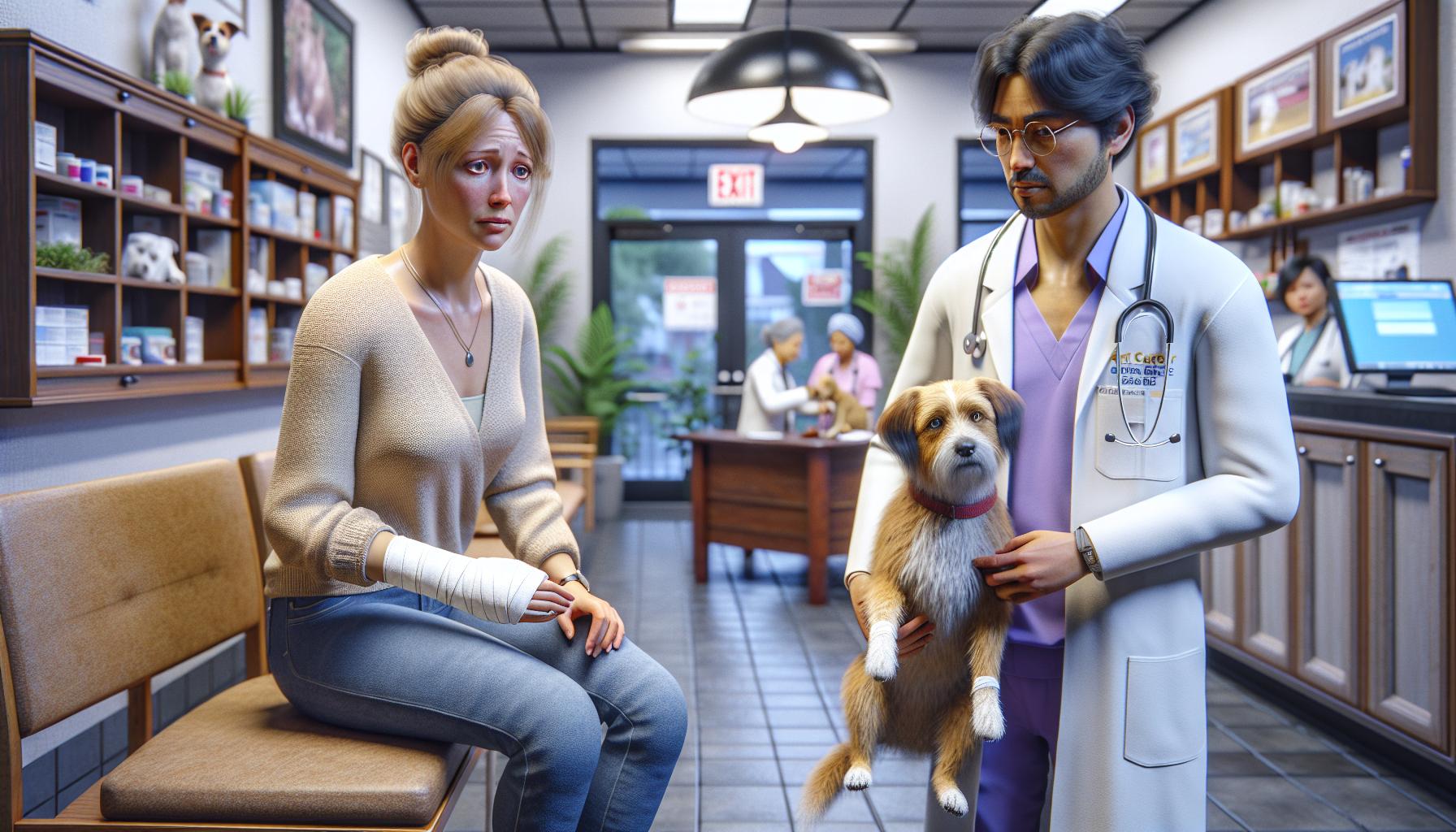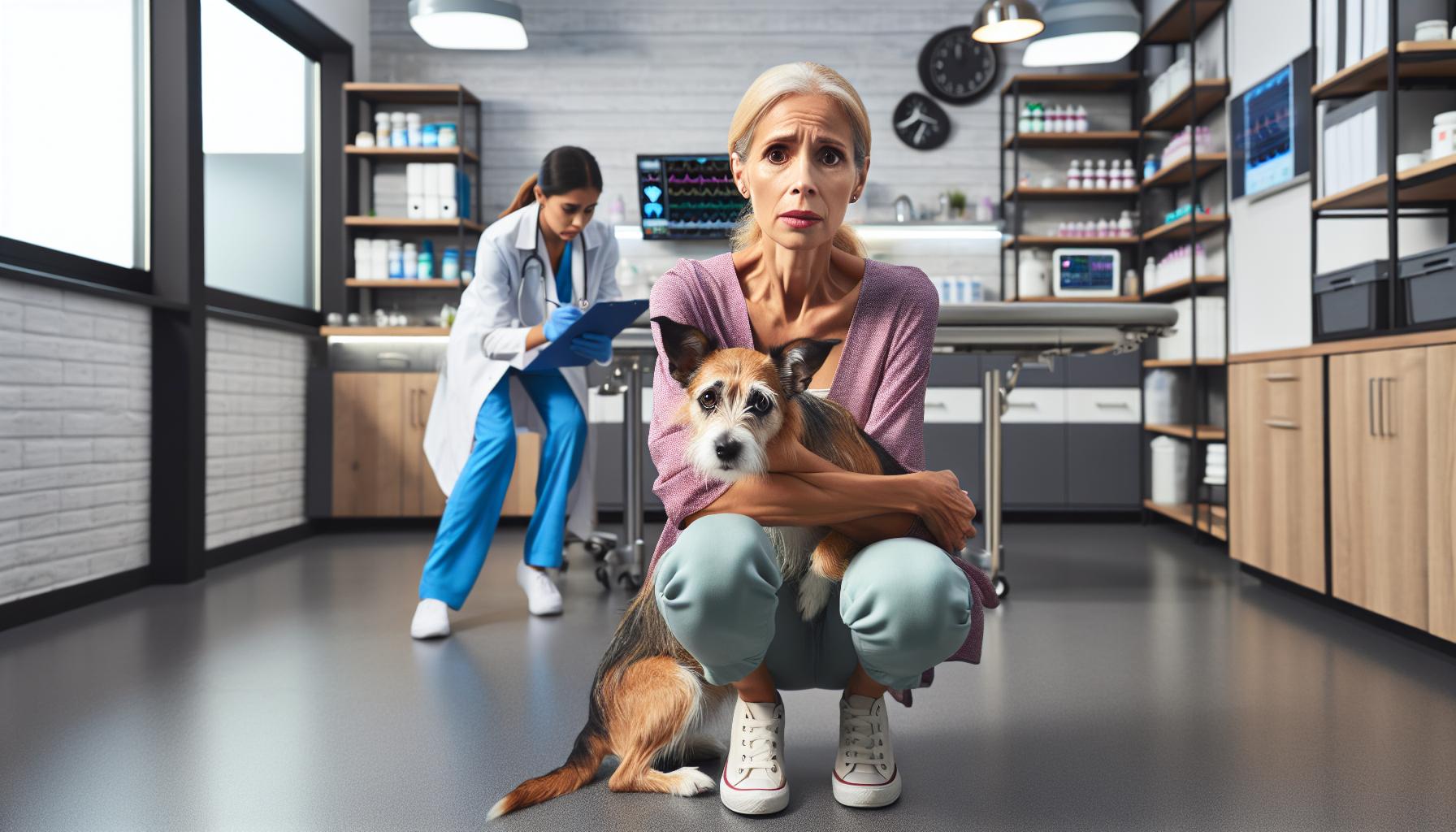When your furry friend suddenly decides to play a game of “let’s scare the human,” urgent care for pets becomes a top priority. Whether it’s a mysterious tummy ache or an unexpected tumble from the couch, knowing where to turn can make all the difference. Let’s face it—your pet can’t exactly text you when they’re feeling under the weather, so being prepared is key.
Understanding Urgent Care Pet Services
Urgent care pet services provide critical support during emergencies. These services ensure timely medical attention for pets facing severe health threats.
Definition of Urgent Care Pet
Urgent care pet facilities specialize in addressing non-life-threatening conditions that demand prompt treatment. They focus on situations such as minor injuries, infections, or sudden illness symptoms. These facilities differ from regular veterinary clinics, which may not accommodate emergencies outside regular hours. By offering extended hours and immediate consultations, urgent care services ensure pets receive essential care when primary veterinarians are unavailable.
When to Seek Urgent Care for Your Pet
Recognizing when to seek urgent care for pets is vital for their welfare. Go to an urgent care facility if a pet shows signs of difficulty breathing, excessive bleeding, or severe vomiting. In addition, altered behavior or inability to urinate requires immediate attention. Minor injuries, such as wounds or fractures, should also prompt a visit to these facilities. Early intervention often leads to better outcomes. Quick action in emergencies can significantly affect a pet’s recovery and health status.
Benefits of Urgent Care Pet Facilities

Urgent care pet facilities offer essential services during critical moments when pets require immediate medical attention. Pet owners can benefit significantly from these specialized services.
Fast and Convenient Care
Urgent care pet facilities provide prompt treatment, minimizing wait times compared to traditional veterinary visits. Immediate attention allows pets to receive necessary care quickly, especially in emergencies. Walk-in services typically accommodate varying schedules, ensuring pet owners can access care at their convenience, often without the need for an appointment. Extended hours support both day and night visits, enabling pet owners to seek help whenever emergencies arise. Rapid response times play a crucial role in stabilizing pets and addressing urgent health issues effectively.
Specialized Veterinary Staff
Veterinary staff at urgent care pet facilities possess specialized training in emergency care. Experienced technicians and veterinarians ensure animals receive tailored attention suited to their specific needs. Facilities often maintain a team skilled in various aspects of urgent care, offering expertise in treating acute illnesses and injuries. Continued education among staff members keeps them updated on best practices and advanced treatment protocols. This specialization enhances the quality of care pets receive during critical moments, ultimately improving outcomes and supporting rapid recovery.
Common Conditions Treated at Urgent Care Pet Clinics

Urgent care pet clinics handle a range of conditions that require immediate attention to ensure pets stay healthy and safe. Understanding common issues can help pet owners recognize when it’s time for a visit.
Injuries and Trauma
Pets often suffer from injuries and trauma, making urgent care clinics essential. Cuts, scrapes, and bite wounds typically demand prompt treatment to prevent infection. Fractures and sprains also fall into this category, necessitating quick interventions to alleviate pain and promote healing. In addition, instances of poisoning or allergic reactions require swift veterinary action. These circumstances can develop rapidly, so recognizing the signs, like limping or excessive behavior changes, plays a crucial role in effective care.
Illnesses Requiring Immediate Attention
Various illnesses necessitate immediate veterinary care. Symptoms including difficulty breathing, severe vomiting, or prolonged diarrhea indicate urgent attention is vital. Urgent care clinics address cases of dehydration or heatstroke, both of which can escalate quickly if not treated. Infections may also arise suddenly, causing lethargy or fever in pets. The proper evaluation and treatments will support pets in regaining their health promptly. Awareness of these illnesses ensures pet owners act quickly when their furry companions encounter health challenges.
How to Choose the Right Urgent Care Pet Facility
Choosing the right urgent care pet facility requires careful consideration of various factors that affect accessibility and services provided.
Location and Accessibility
Location plays a crucial role in selecting an urgent care pet facility. Pet owners should choose a facility close to home, reducing travel time during emergencies. Accessibility is equally important; facilities with extended hours accommodate scheduling needs, making care more convenient. Verify if the clinic accepts walk-ins to streamline the process during urgent situations. Asking about parking options can ensure a quick and hassle-free visit as well.
Emergency Services Offered
Pet owners must understand the range of emergency services offered at an urgent care pet facility. Look for clinics that address minor injuries and illnesses such as cuts, scrapes, vomiting, or allergic reactions. Ensure the facility is equipped to perform essential procedures, including diagnostic tests and minor surgeries, as these can be vital for rapid treatment. Inquire about the availability of specialized services like intravenous fluids or oxygen therapy, which can significantly impact a pet’s recovery. Selecting a facility with a comprehensive approach to urgent care ensures pets receive the necessary attention in critical moments.
Cost Considerations for Urgent Care Pet Treatment
Understanding the costs involved in urgent care pet treatments helps pet owners prepare for unexpected situations. Pricing varies significantly based on the procedure and facility.
Price Range for Common Procedures
Common procedures at urgent care pet facilities typically range from $150 to $1,000. A minor wound repair often costs between $150 and $300. In contrast, treatments for conditions like severe vomiting or dehydration may range from $300 to $700. More extensive treatments, such as surgeries or critical care, can escalate to $1,000 or more. Knowing these price ranges aids in budgeting for potential emergencies.
Insurance and Payment Options
Pet insurance can significantly offset urgent care costs. Many policies cover a portion of emergency treatments, but coverage varies. Some facilities offer payment plans or accept credit cards, allowing flexibility for pet owners. Checking in advance about accepted insurance providers helps avoid financial surprises during an emergency. Understanding all available options ensures responsible financial planning for pet health needs.
Conclusion
Urgent care pet facilities play a crucial role in ensuring pets receive timely medical attention during emergencies. By being aware of the signs that necessitate a visit and knowing where to go, pet owners can significantly improve their furry friends’ chances of recovery. The convenience of extended hours and walk-in services makes these facilities an essential resource for pet care.
Additionally, understanding the cost implications and exploring payment options can alleviate financial stress during urgent situations. Prioritizing a nearby urgent care facility with the right services can make all the difference when it comes to your pet’s health and well-being. Taking proactive steps now will prepare pet owners for unforeseen emergencies, ensuring their beloved companions get the care they deserve when it matters most.




